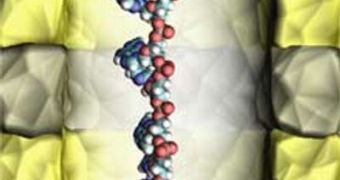Since genetic sequencing was first achieved, experts working in this field have been trying to make the process faster, cheaper and more accurate. Picking up on this trend, engineers at IBM are currently working on a new type of microchips that would enable the creation of sensors capable of reading a DNA molecule's genetic code as it passes through. The chips would rely on a technique known as nanopore sequencing to get the job done, Technology Review informs.
The fabrication techniques used for the new chips have been refined from semiconducting manufacturing. The new devices will contain layered electrodes that will be able to control the movements of individual DNA molecules. Nanopore sequencing holds great promise in making reading DNA faster than usual a reality, because it can read the genetic material in one go, regardless of how long the strand is. Other methods need to insert labels, chop the samples, and use amplifying enzymes to get the correct reading.
“If this works, you should be able to read tens of thousands of bases with no labels, making it cheap and fast. If you can do long reads, you don't have to make assumptions about the sequence or match it to existing sequences,” when it is time to put it back together, National Human Genome Research Institute Technology Development Program Director Jeffery Schloss says. He believes that the method would also bring significant improvement to the data-processing side of genome sequencing.
The main issue plaguing the development of the new sensor is controlling the speed at which the DNA sample, base by base, goes through the chip. “The DNA goes through the pore too fast,” IBM T. J. Watson Research Center Manager of Functional Genomics and Systems Biology Gustavo Stolovitzky explains. The center is located in Yorktown Heights, NY.
Over the past two years, since the IBM team began working on this project, the scientists have developed DNA transistors, based on the same manufacturing technology as silicon integrated circuits. These transistors use layered chips to control the speed of a DNA sample. The speed can be influenced because DNA has an electrical charge, and it can, therefore, be affected by electrode-generated electrical fields.

 14 DAY TRIAL //
14 DAY TRIAL //